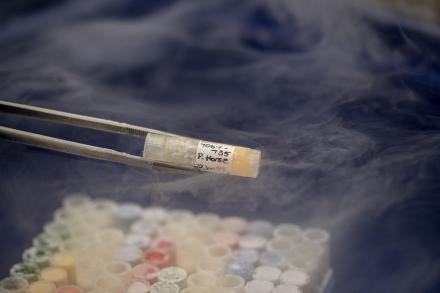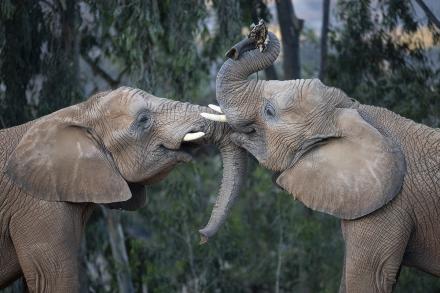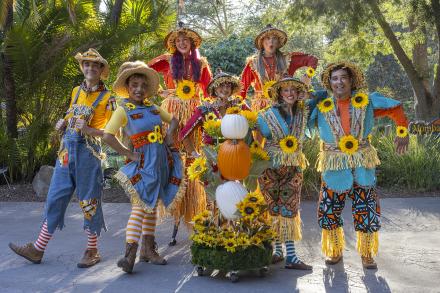Image

With its heady scent, earthy color palette, lush, melting texture, and indescribable flavor, it’s no wonder people around the world embrace chocolate. But how do we get from pod to pleasure? The process from shade-loving tree to foil-trussed bar is a fascinating, labor-intensive journey with a lexicon all its own.
[caption id="attachment_127612" align="aligncenter" width="600"] SHADE GROWN
SHADE GROWN
Cacao trees are delicate, shade-loving plants that thrive in the tropics.[/caption] All varieties of chocolate rely on a key ingredient: cacao seeds pried from a pulpy pod growing on a fragile tree. The cacao (pronounced kah-KOW) tree most likely originated in the Amazon, sheltered beneath the forest canopy, straddling 20 degrees north and south of the equator—75 percent of cacao is found within 8 degrees of this equatorial belt. Requiring a strict diet of rain, shade, humidity, and nitrogen-rich soil, cacao trees also flourish in West Africa, South and Central America, and Southeast Asia and Oceania. Wherever it’s grown, debate follows the botany of the cacao pod: some say it’s a fruit, others say a berry. The bottom line is that chocolate comes from a fruit tree but it’s made from the seeds, which are also called beans. And our affection for this confection is still going strong.
 Pollinated flowers give way to football-shaped pods, 8 to 14 inches long, which grow directly from the tree’s main branches and trunk. Twice a year, farmers harvest ripe cacao pods by hand, slicing them carefully from the tree using a machete. It takes 7 to 14 pods to produce one pound of dry cacao beans. Monkeys, birds, and rodents also covet cacao and use teeth, bills, and claws to break into the pods to eat the rich, sweet pulp. But the almond-sized cacao beans (seeds) are bitter, so animals spit them out and they sprout and grow, renewing the forest understory.
Harvesting cacao pods is just the first step. Farmers then split the pods—a well-practiced worker can crack 500 pods per hour—and pile the pulpy cacao seeds in baskets or under banana leaves to dry and ferment. In about a week, the purplish seeds turn a rich, dark brown. Each pod contains 30 to 50 seeds, enough to make 7 chocolate bars. Once dried, the precious cacao seeds are shipped to brokers, markets, and factories in burlap bags weighing up to 200 pounds each.
Pollinated flowers give way to football-shaped pods, 8 to 14 inches long, which grow directly from the tree’s main branches and trunk. Twice a year, farmers harvest ripe cacao pods by hand, slicing them carefully from the tree using a machete. It takes 7 to 14 pods to produce one pound of dry cacao beans. Monkeys, birds, and rodents also covet cacao and use teeth, bills, and claws to break into the pods to eat the rich, sweet pulp. But the almond-sized cacao beans (seeds) are bitter, so animals spit them out and they sprout and grow, renewing the forest understory.
Harvesting cacao pods is just the first step. Farmers then split the pods—a well-practiced worker can crack 500 pods per hour—and pile the pulpy cacao seeds in baskets or under banana leaves to dry and ferment. In about a week, the purplish seeds turn a rich, dark brown. Each pod contains 30 to 50 seeds, enough to make 7 chocolate bars. Once dried, the precious cacao seeds are shipped to brokers, markets, and factories in burlap bags weighing up to 200 pounds each.


 Chocolate houses were all the rage in England in the 15th and 16th centuries, when people gathered over steaming chocolate drinks to socialize, gamble, and discuss issues of the day. Some found this a worrisome trend, and Charles II of England tried to close all the chocolate houses, as he feared his enemies would plot against him over cocoa. But chocolate had found its way into the hearts and mouths of commoners and kings alike, and there was no going back.
These days, Europeans consume the most chocolate, with the average Swiss citizen enjoying 22 pounds per year, followed by Austrians who consume just over 20 pounds each year. People in the US put away about 11 pounds per year per person, according to the International Cocoa Organization. Although Africa produces 75 percent of the world’s cacao (Ivory Coast is now the top cacao-producing country), people there consume only 3 percent of the world’s chocolate. One study in the UK revealed 91 percent of women and 87 percent of men imbibe in the bean. Valentine’s Day week is a boon for candy sales, and the US snaps up 58 million pounds of chocolate. Perhaps true love does grow on trees after all.
(Photos by, from top): Ken Bohn/SDZG; YinYang/iStock/Getty Images; TinaFields/E+/Getty Images; AndreyGorulko/iStock/Getty Images; Ken Bohn/SDZG; xeni4a/iStock/Getty Images; NightandDayImages/E+/Getty Images
Chocolate houses were all the rage in England in the 15th and 16th centuries, when people gathered over steaming chocolate drinks to socialize, gamble, and discuss issues of the day. Some found this a worrisome trend, and Charles II of England tried to close all the chocolate houses, as he feared his enemies would plot against him over cocoa. But chocolate had found its way into the hearts and mouths of commoners and kings alike, and there was no going back.
These days, Europeans consume the most chocolate, with the average Swiss citizen enjoying 22 pounds per year, followed by Austrians who consume just over 20 pounds each year. People in the US put away about 11 pounds per year per person, according to the International Cocoa Organization. Although Africa produces 75 percent of the world’s cacao (Ivory Coast is now the top cacao-producing country), people there consume only 3 percent of the world’s chocolate. One study in the UK revealed 91 percent of women and 87 percent of men imbibe in the bean. Valentine’s Day week is a boon for candy sales, and the US snaps up 58 million pounds of chocolate. Perhaps true love does grow on trees after all.
(Photos by, from top): Ken Bohn/SDZG; YinYang/iStock/Getty Images; TinaFields/E+/Getty Images; AndreyGorulko/iStock/Getty Images; Ken Bohn/SDZG; xeni4a/iStock/Getty Images; NightandDayImages/E+/Getty Images
Cacao trees are delicate, shade-loving plants that thrive in the tropics.[/caption] All varieties of chocolate rely on a key ingredient: cacao seeds pried from a pulpy pod growing on a fragile tree. The cacao (pronounced kah-KOW) tree most likely originated in the Amazon, sheltered beneath the forest canopy, straddling 20 degrees north and south of the equator—75 percent of cacao is found within 8 degrees of this equatorial belt. Requiring a strict diet of rain, shade, humidity, and nitrogen-rich soil, cacao trees also flourish in West Africa, South and Central America, and Southeast Asia and Oceania. Wherever it’s grown, debate follows the botany of the cacao pod: some say it’s a fruit, others say a berry. The bottom line is that chocolate comes from a fruit tree but it’s made from the seeds, which are also called beans. And our affection for this confection is still going strong.



